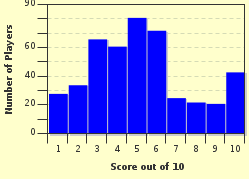Quiz Answer Key and Fun Facts
1. In most countries around the world, municipal solid waste is put into landfills. In some countries, among others the Netherlands, Germany and recently the United Kingdom, land filling is prohibited or discouraged. Why?
2. In the Netherlands in the seventies, the "ladder of Lansink" was developed. This is a list of ways to treat waste in order of preference. Which of the following orders is the order of the ladder of Lansink, keeping in mind that it starts with the most preferable waste handling method.
3. What is the most common way of generating energy from municipal solid waste?
4. Now, let's focus on the incineration of waste. If you look into an industrial waste incinerator in operation, what do you see?
5. Is the energy generated with the incineration of municipal solid waste considered renewable energy?
6. Some environmental organisations have remarks on the environmental friendliness of waste-to-energy plants. What is considered a problem?
7. What substance is typically formed during the incineration of waste, along with compounds like CO2, SOx, NOx and HCL?
8. What is an important difference between electricity producing waste-to-energy plants and power plants?
9. The efficiency of a waste-to-energy plant is 20 - 30 %. Efficiency = produced useful energy divided by energy in fuel. What methods are used to increase the efficiency of waste-to-energy plants?
10. The incineration of waste produces flue gases and ashes. The flue gases are cleaned and exhausted to the atmosphere. What is done with the ashes and flue gas cleaning residues?
Source: Author
Laujan
This quiz was reviewed by FunTrivia editor
crisw before going online.
Any errors found in FunTrivia content are routinely corrected through our feedback system.

